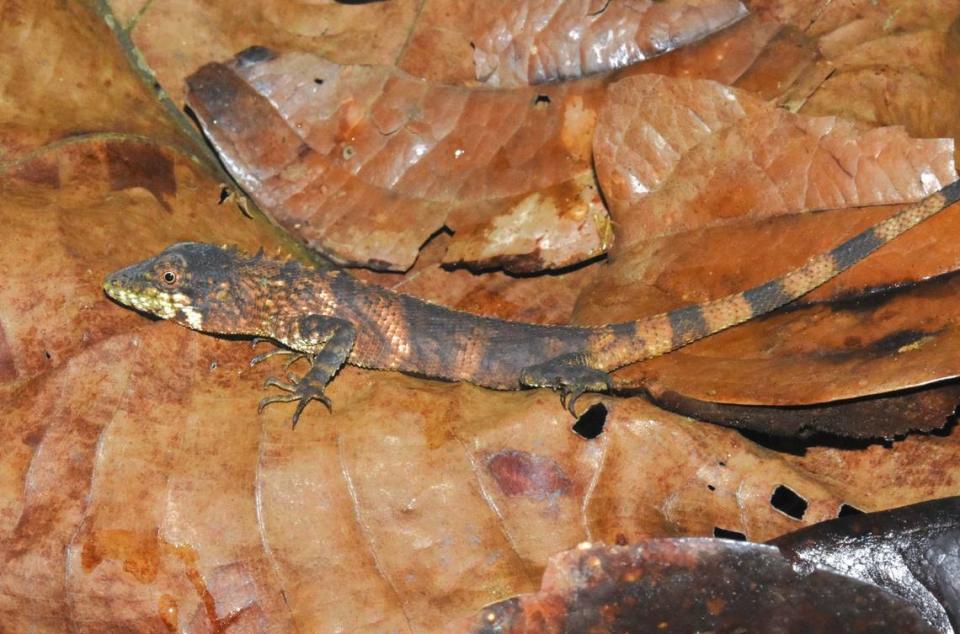Student spots ‘very rare,’ color-changing lizard. See the first-of-its-kind sighting
As the evening sun trickled through the forest in Malaysia, an elusive lizard searched for a bed. It settled on some plants and fell asleep. But the night would not be a restful one.
“Our student (Zijia Hong)‘s sharp eyes immediately recognized the lizard and knew the significance of the find,” Evan Quah, one of the co-authors of a recent study, told McClatchy News via email.
Hong noticed the color-changing lizard while surveying wildlife on Fraser’s Hill in May 2019, according to the study published Feb. 15 in the peer-reviewed journal Zootaxa.
The reptile was a Drogon’s false garden lizard.
Drogon’s false garden lizard, or Pseudocalotes drogon, was discovered as a new species in 2015, the study said. Researchers repeatedly searched for the species but only ever found one male lizard.
Years later, Hong had found “the first female Pseudocalotes drogon ever recorded,” Quah said.
The roughly 8-inch-long female lizard was “generally” similar to the male, researchers said. She had a “relatively large” head, a “creamy” blotch on her throat and the ability to change color.

During her “dark phase,” the female Drogon’s false garden lizard has a brown body with several darker black bands. A photo shows this coloring phase.
During her “light phase,” the female lizard changes from brown to “muddy green,” the study said.
“We believe that (the lizard’s color change) is probably related to stress,” Quah said. “Many species of agamid lizards can change their coloration based on various factors such as their mood, to display to rivals or mates, and even thermoregulation.”
The first-of-its-kind female lizard “was found sleeping at night in low vegetation along a forested trail,” Quah said.
Hong also encountered another Drogon’s false garden lizard on Fraser’s Hill in 2022 and took pictures but did not capture the animal, the study said.
“This is a very rare genus of lizard and there is still much to be learnt about their ecology,” Quah said. “Most other species of Pseudocalotes in Peninsular Malaysia are also only known from a handful of specimens, and some have never even been photographed alive.”
Fraser’s Hill is in Pahang state and about 40 miles northeast of Kuala Lumpur, the capital city.
The research team included Zijia Hong, M.S. Shahrul Anuar, L. Lee Grismer and Evan S. H. Quah.
Shimmering deep-sea creature — a ‘headless chicken monster’ — spotted, video shows
‘Mysterious’ pickle-shaped sea critter that glows is seen on Oregon beach. What is it?
‘Extremely rare’ sea creature leaps out of water and stuns scientists in Australia


